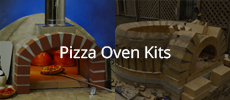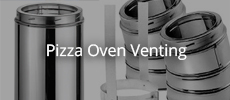(M) I'm never quite sure where to post a new thread so I posted over my old "Sink Height" post.
(M) There has been a lot of discussion about the order of concrete layers, island hearths, insulation sheets, etc. This post is only in support of the original (traditional) design that was built by ColCorn (Jim) well over a year ago. I used essentially his same design with a few modifications such as the orientation of the first course of bricks. The Hearth Slab was the same order.
(M) Three days ago I built a quick fire, perhaps 45 MIn. duration and only up to 500 degrees as I wanted to cook a brisket on low heat. That was still way too hot and "Streetcar" totally dried out the brisket. But this is not about cooking, but materials used and the order of their application.
(M) Day two showed my oven still at 250, and today it is at 160. This fire was purposely restrained for my hoped for slow cooking. I'm impressed with it's heat retention ability. I think that only an Allen Scott design could retain heat better and it would take a lot longer heating up and need a lot more wood.
(M) Here's the order and materials of my oven:
(M) On top of the concrete block stand I have a 2.5" layer of Perlcrete. On top of that, a 3.5" layer of steel reinforced refractory concrete.
(M) Once dry, I used a notched trowel to spread a thin moist (not wet) layer of leveling mix of sand and fire clay on the Hearth Slab. I placed my bricks in a true Herring Bone pattern.
(M) I built the dome of medium duty, heavy refractory bricks. The refractory mortar (8 parts mortar sand, 3 parts Portland cement, 2 parts fire clay) was also used as a 1/2 inch cladding layer once the dome was completed.
(M) On top of the refractory cladding layer I placed 12" wide ribbon sheets of heavy duty aluminum foil; starting from the bottom, and working my way to the top.
(M) Once the foil covered the dome, I placed 1" mesh chicken wire on top of the foil and covered both foil and wire with about an inch of Perlcrete. This layer was too thin to provide significant insulation. It's purpose was to protect the foil. But I subsequently poured 28 cubic feet of dry perlite inside the housing. If you decide against a gabled roof housing, I would strongly suggest as much Perlcrete as you can afford.
(M) I made many design changes, e.g. to the manifold, vent, and chimney but the only significant difference between the order and choice of materials to ColCorn's was the inclusion of the aluminum foil layer. I don't know to what degree it helped so this is not a plug for foil, but I can't see that it hurt.
(M) If you are a Newbie and want to follow the process more closely, you could look on this Forum for my postings but it would be simpler to go to PhotoBucket where the entire process is documented with about 89 images:
Ciao,
Marcel
P.S. I'm sure that my oven would have retained heat even better had the 2 layer air space in my door not separated, and had the seal been tighter. The separation was caused by "Streetcar" having used screws that were a tad too long and their tips put a separating pressure between the layers.
(M) There has been a lot of discussion about the order of concrete layers, island hearths, insulation sheets, etc. This post is only in support of the original (traditional) design that was built by ColCorn (Jim) well over a year ago. I used essentially his same design with a few modifications such as the orientation of the first course of bricks. The Hearth Slab was the same order.
(M) Three days ago I built a quick fire, perhaps 45 MIn. duration and only up to 500 degrees as I wanted to cook a brisket on low heat. That was still way too hot and "Streetcar" totally dried out the brisket. But this is not about cooking, but materials used and the order of their application.
(M) Day two showed my oven still at 250, and today it is at 160. This fire was purposely restrained for my hoped for slow cooking. I'm impressed with it's heat retention ability. I think that only an Allen Scott design could retain heat better and it would take a lot longer heating up and need a lot more wood.
(M) Here's the order and materials of my oven:
(M) On top of the concrete block stand I have a 2.5" layer of Perlcrete. On top of that, a 3.5" layer of steel reinforced refractory concrete.
(M) Once dry, I used a notched trowel to spread a thin moist (not wet) layer of leveling mix of sand and fire clay on the Hearth Slab. I placed my bricks in a true Herring Bone pattern.
(M) I built the dome of medium duty, heavy refractory bricks. The refractory mortar (8 parts mortar sand, 3 parts Portland cement, 2 parts fire clay) was also used as a 1/2 inch cladding layer once the dome was completed.
(M) On top of the refractory cladding layer I placed 12" wide ribbon sheets of heavy duty aluminum foil; starting from the bottom, and working my way to the top.
(M) Once the foil covered the dome, I placed 1" mesh chicken wire on top of the foil and covered both foil and wire with about an inch of Perlcrete. This layer was too thin to provide significant insulation. It's purpose was to protect the foil. But I subsequently poured 28 cubic feet of dry perlite inside the housing. If you decide against a gabled roof housing, I would strongly suggest as much Perlcrete as you can afford.
(M) I made many design changes, e.g. to the manifold, vent, and chimney but the only significant difference between the order and choice of materials to ColCorn's was the inclusion of the aluminum foil layer. I don't know to what degree it helped so this is not a plug for foil, but I can't see that it hurt.
(M) If you are a Newbie and want to follow the process more closely, you could look on this Forum for my postings but it would be simpler to go to PhotoBucket where the entire process is documented with about 89 images:
Ciao,
Marcel
P.S. I'm sure that my oven would have retained heat even better had the 2 layer air space in my door not separated, and had the seal been tighter. The separation was caused by "Streetcar" having used screws that were a tad too long and their tips put a separating pressure between the layers.







Comment